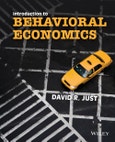Table of Contents
Preface xv
1 Rationality, Irrationality, and Rationalization 1
Part 1 Consumer Purchasing Decisions
2 Transaction Utility and Consumer Pricing 17
3 Mental Accounting 41
4 Status Quo Bias and Default Options 70
5 The Winner’s Curse and Auction Behavior 93
Part 2 Information and Uncertainty
6 Bracketing Decisions 125
7 Representativeness and Availability 156
8 Confirmation and Overconfidence 187
9 Decision under Risk and Uncertainty 214
10 Prospect Theory and Decision under Risk or Uncertainty 250
Part 3 Time Discounting and the Long and Short Run
11 Disagreeing with Ourselves: Projection and Hindsight Biases 281
12 Naïve Procrastination 309
13 Committing and Uncommitting 347
Part 4 Social Preferences
14 Selfishness and Altruism 389
15 Fairness and Psychological Games 417
16 Trust and Reciprocity 450
Glossary 473
Index 495








